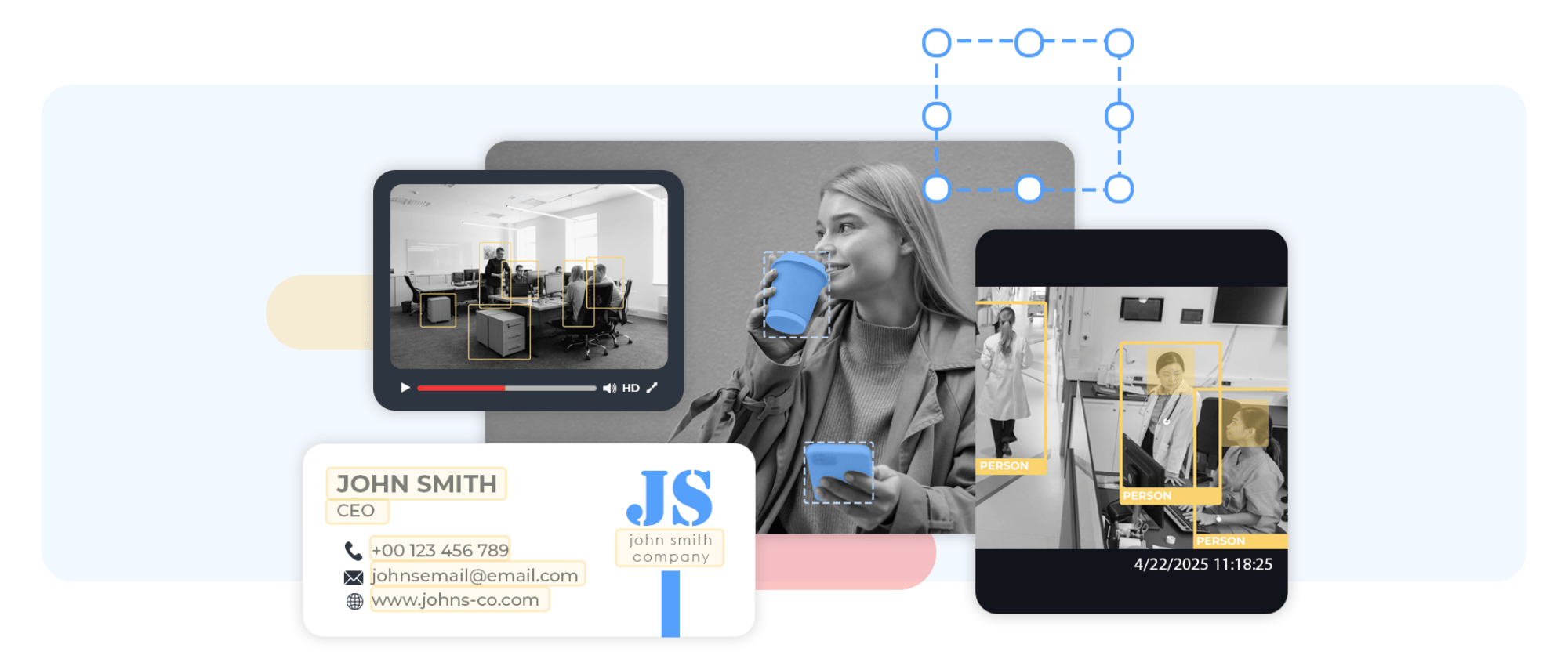Like many other areas where large datasets are generated, customer experience is no exception from the power of data analytics. Companies more commonly and increasingly use this initiative to assess CX performance and build the best possible and enjoyable consumer journey, all backed by accurate data-driven decision-making rather than relying on more straightforward evaluation or gut feelings. Consequently, customer experience analytics play an essential role in CX’s strategy, and its impact will likely grow over time.
What is customer experience analytics? Definition and explanation
What is customer experience analytics truly? There are various explanations, and one of these is the example provided by Gartner, which defines it as follows: “Customer analytics is the utilisation of data to comprehend consumer composition, needs, and satisfaction. It also enables technology to categorise buyers into groups based on their behaviour, identify overarching trends, and formulate precise marketing and sales strategies”. Furthermore, one of the HubSpot articles offers a more straightforward perspective, stating that “CX analytics is the primary way to get familiar with consumers, gain a deeper understanding of their needs, and thus provide them with products and services they truly love”.
This all effectively illustrates the customer experience analytics concept, its idea, and its benefits, emphasising that it is even more profound from a technical standpoint. Behind stands deep knowledge, sophisticated technology, complex analysis techniques, IT solutions and advanced management strategies.
Analytics for customer experience: how does it work?
Analytics for customer experience entails gathering, storing, and analysing complex raw buyer data to identify significant patterns and hidden trends. This process culminates in translating the derived discoveries into actionable insights regarding buyer behaviour, feedback, preferences, intentions, likes, incentives, shopping patterns, desires, perceptions, historical purchases and more. Having such a detailed, precise and reality-reflecting picture of customer interactions and journeys, companies can quickly determine what works well, where the pain points are, what requires adjustment and where the potential holds. Ultimately, they can deploy relevant strategies, make necessary adjustments and take the right corrective actions, leading to CX optimisation toward greater efficiency and heightened buyer satisfaction.
What does the analytical approach in CX bring?
When executed effectively, customer experience analytics yields substantial advantages for an organisation. It empowers the creation of meticulously designed customer-centric strategies that meet buyer expectations and proactively exceed them, laying the foundation for exceptional and enduring relationships characterised by personalisation, trust, and mutual value while going beyond simply addressing inquiries and complaints. Moreover, it aids in identifying customer priorities, formulating valuable CX tactics and establishing effective channels where outstanding experiences can shape buyers’ perceptions efficiently. Last, integrating the insights generated through CX analytics into operational practices may increase business efficiency, reduce costs and improve resource allocation.
Ultimately, the significance of customer experience analytics for business has been revealed in the Gartner survey “Top Goals and Priorities for Customer Service and Support Leaders in 2023”. According to that, “84% of participant leaders regarded customer data and analytics as critical for achieving their organisational goals”.
What data is used for customer experience analytics?
To make it work from scratch, customer experience analytics requires a comprehensive and accurate dataset covering a wider range of interactions, including digital and offline touchpoints where buyers engage with a brand. These refer to various sources, such as in-store purchases, phone conversations with the support service agents, surveys and questionnaires, online forms, website user accounts, mobile apps or social media.
The primary form of data collection commonly centres around contact details like names, phone numbers, email and physical addresses. This information is crucial for order processing, shipping coordination and payment management. In addition, businesses utilise various other pieces of information, allowing them to conduct more in-depth assessments and broader analyses, ultimately resulting in a thorough comprehension of buyers, such as:
Demographic Information
This includes details about customers’ age, gender, location, income level, education, occupation, and more.
Transactional Data
This consists of records of past purchases, browsing history, and previous interactions with a brand.
Behavioural Data
This involves tracking how buyers interact with the brand, such as the types of products or services they prefer and which communication channels they find most appealing.
Preference Data
This includes information about customers’ chosen products or services and their preferred communication channels.
Customer Support Data
This contains historical information about buyer interactions with customer support, including questions, complaints, and resolutions.
Social Media Data
This encompasses conversations, comments, and feelings about the brand across social media platforms.
Third-Party Data
This refers to information from external sources like industry reports, market trends, and competitor analysis.
Data privacy and safety compliance during CX analysis
Data privacy and safety are vital while fostering a culture of trust among customers, regardless of the method, channels, or type of information collected in the customer data analytics process. This involves maintaining clear and current policies for handling personal data, complying with legal laws, and being transparent about data use. Implementing strong measures and conducting regular safety audits are also essential to enhance security further. Moreover, it is critical always to secure explicit consent for data collection, storage, and processing while enabling consumers to modify or delete data upon request. Other key considerations are data anonymisation, extending information collection to a minimum, avoiding possible sensible data and excluding third-party information.
Customer experience metrics and major KPIs
Several essential groups of quantitative or qualitative metrics are used in the customer experience analytics process. They help measure buyer interactions, satisfaction levels, and overall experiences with the brand, company and its employees.
The most common and important metrics are the voice of customers (VoC), operational and employee experience metrics, which examples are described below:
- Satisfaction Metrics: They cover buyer feedback and insights such as Customer Satisfaction Score (CSAT), Customer Effort Score (CES) or Net Promoter Score (NPS), which allows for understanding satisfaction and loyalty levels. Engagement Metrics: They encompass insights on Customer Retention Rate (CRR), Repeat Purchase Rate (RPR), Customer Lifetime Value (CLV), Average Order Value (AOV), Average Time Spent (ATS), Churn or Attrition Rate, showing buyer commitment to the company’s products and services.
- Operational Metrics: They help measure CX operational efficiency, including Average Handle Time (AHT), First-Level Resolution (FLR), or Abandoned Call Rate (ACR).
- Employee Experience Metrics: They are a valuable source of information on Employee Engagement and Satisfaction Levels (ENPS) or Team Performance (XLA), essential for creating positive experiences.
How to track the customer experience state in the company?
Linking the customer experience analytics metrics with strategically chosen key performance indicators (KPIs) allows companies to monitor the current performance of services, processes or resources. While quantified with specific numbers or percentages, KPIs reflect how well the assigned goals are being met, what progress is made and what is still missing to achieve desired outcomes, indicating the effectiveness of executed strategies and guiding continuous improvement efforts.
In the context of CX analytics, another important indicator, such as return on investment (ROI), is also worth mentioning. ROI is used to assess the effectiveness of the resources invested in the CX improvement compared to their returns.
Practical use cases of customer experience analytics
Numerous undertakings can be nurtured and empowered through insight-driven customer experience analytics. Companies can focus on enhancing products, services, processes, and customer interactions while pursuing endeavours that previously could not be achieved at such a profound level. These refer to the activities in which decision-making is critical and analytical knowledge is a guide for identifying opportunities, predicting customer preferences, and fine-tuning strategies that align precisely with evolving market dynamics and customer demands.
Here are some of the most popular and practical examples, for instance:
Customer journey analysis: This refers to mapping the entire customer journey, from initial stages to post-purchase support, prioritising buyer emotions and needs. It keeps organisations aligned with evolving preferences, intentions, and motivations, facilitating tailored experiences and enhancing satisfaction while optimising buyers’ lifecycles and focusing on the coverage’s most promising and impactful touchpoints.
Segmentation: The process involves identifying similar characteristics of buyers and categorising them into distinct groups based on demographics, behaviours, or preferences. This, in turn, facilitates tailored CX efforts for each segment, allowing companies to provide customised experiences instead of employing a one-size-fits-all approach, leading to increased impact and enhanced perception.
Personalisation: This is a pivotal element of the CX strategy, allowing for providing individualised experiences across multiple interaction points, using the insights derived from data capturing every customer engagement. Thanks to that, it is possible to communicate what buyers expect, use their preferred channels and daytime, and even anticipate their needs, fostering deeper engagement and lasting loyalty.
Omnichannel: The omnichannel strategy serves as a centralised information hub providing a holistic view of consumers and their interactions, fueled with relevant customer insights. Supported by a suitable CRM solution, integrated with specific customer experience analytics software, the initiative allows companies to effectively utilise data to deliver a more seamless and targeted experience.
Churn Prediction: By analysing historical data and patterns, organisations can predict when customers will likely leave a brand and take proactive retention measures to avoid it.
Predictive CX analytics: how to forecast the future behaviour of the clients?
Along with the technological development primarily related to artificial intelligence, customer experience analytics is also evolving, becoming more AI-driven, precise, faster, and – what is critical – predictive.
While managing high-quality data is a cornerstone of the overall CX analytical initiative, the crucial point lies in generating the most relevant insights. Up to this point, generating findings related to the past has been common practice, facilitating a better understanding of buyers. AI solutions enable companies to go beyond, predicting with the highest probability the behaviours and habits that the future holds for customers.
To illustrate the analytical process capability more profoundly, the insights provided by Harvard Business School Online present four types of data analytics, among which the predictive model brings a fresh perspective to CX management:
Analytic type
They answer the questions like:
- Descriptive – What happened?
- Diagnostic – Why did this happen?
- Prescriptive – What should be done next?
- Predictive – What might happen in the future?
Leveraging tools like machine learning or deep learning, companies can achieve breakthroughs, moving beyond traditional analysis toward predictive models. Their strength lies in estimating the likelihood of future outcomes, providing accurate forecasts and enabling well-informed business decisions and strategic CX investments.
Examples of customer predictive analytics include:
Predive analytics
Potential action
Predicting which customers will likely churn or discontinue their relationship with a company.
This helps businesses proactively convince buyers to stay and engage in its products and services.
Anticipating when buyers are likely to make their next purchase.
This allows for directing relevant suggestions and recommendations, as well as personalised communication aligned with customers’ interests and expectations.
Anticipating consumer behaviour to allocate resources more effectively.
Considering potential challenges, seasonality or probable unexpected events, companies can adjust their customer support resources to the intensity of interactions.
Identifying potential issues before they escalate.
Organisations can offer proactive customer support, reaching out to individuals with solutions or assistance before they even realise a problem exists.
Summary
Surrounded by massive amounts of customer and buyer-related data, it is necessary to structure its collection, ensure security and maintain high quality.
However, even the best information is only useful with valuable knowledge, which helps understand CX reality better, make accurate predictions, tailor support experiences, and engage with buyers more effectively. That is why analytics for customer experience is a crucial piece of the larger strategy aimed at enhancing CX in a modern and innovative manner. Simultaneously, making data-driven information easily accessible to the relevant stakeholders within the organisation is vital. This requires using appropriate tools and executing effective strategies to bring about positive changes successfully.
















